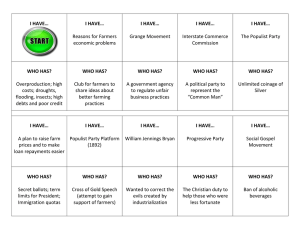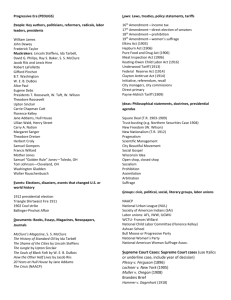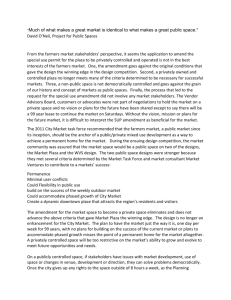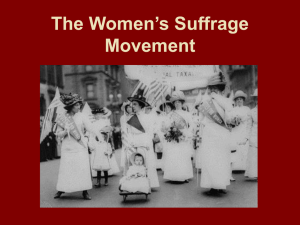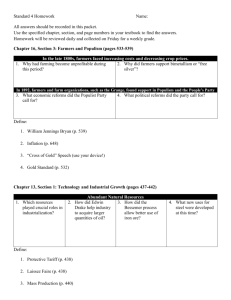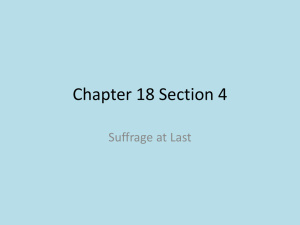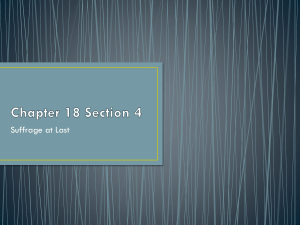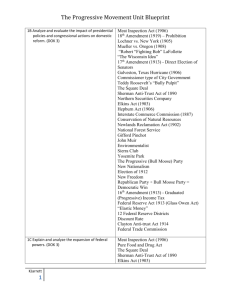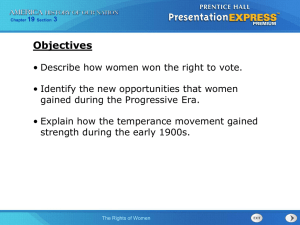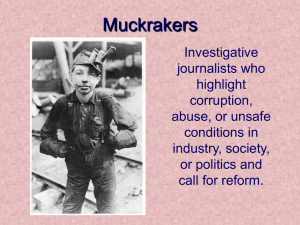File
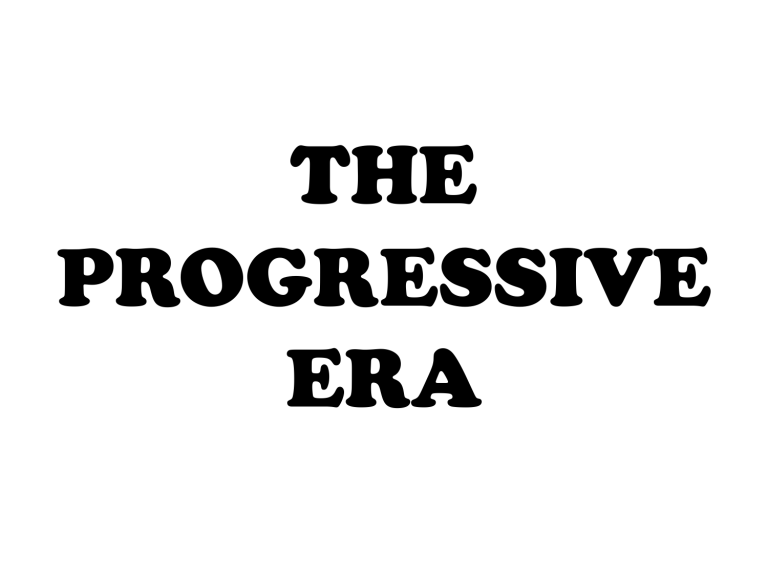
THE
PROGRESSIVE
ERA
The Agrarian Movement
Problems of Farmers: 1870 – 1900
• Increased farm production led to more crops per acre but falling food prices
• Farmers had to ship goods to market and were at the mercy of railroad rates
• Farmers were constantly in debt, and a poor harvest could throw them into chaos
Grange Movement 1876
• Original goal was to reduce rural isolation
• Soon turned into a group demanding economic and political reforms
• Helped get Interstate Commerce Act of 1887 passed to regulate railroads rates
Populist Party: 1891 - 1896
• A national 3 party representing laborers, farmers, and industrial workers
Populist Platform 1982 supported William Jennings
Bryan for President
• Unlimited coinage of silver
• Direct election of Senators
• Term limits for President and Secret ballots
• Immigration restrictions
• A graduated income tax
Third Parties – helped to educate voters on special issues; provide an outlet for minority grievance; and pressure major parties to adopt their ideas
The Progressive Movement
Goals – sought to correct political and economic injustices from industrialization
Roots of Progressivism
• Social Gospel Movement called for social reforms such as abolition of child labor and safer working conditions. So instead of seeing the social problems as God’s will they emphasized Christian duty to help those who were less fortunate .
Impact of Progressivism
• Brought many social reforms to society
The Social Reformers
• Jane Addams, Hull House – settlement house an all purpose community center for poor people living in crowded city neighborhoods.
• Ida B. Wells – lynching (murder by hanging) main tactic to terrorize African Americans; started an anti-lynching crusade.
• W.E.B. DuBois - 1 st African American to earn a Ph.D. from
Harvard, noted historian, and a founder of the NAACP; while
Booker T. Washington argued for gradual equality, DuBois demanded immediate racial equality.
• Anti-Defamation League – a Jewish organization opposed to religious prejudice.
• Progressives also organized charities, clubs, and other associations i.e. YMCA and YWCA
Famous Muckrakers
• Jacob Riis photographed conditions of the poor in How
the Other Half Lives. His book examined the conditions of the poor in America’s cities.
• Ida Tarbell in her History of the Standard Oil Company
1902, showed how John D. Rockefeller’s rise was based on ruthless business practices.
• Lincoln Steffens exposed corruption in city and state governments in his book, The Shame of the Cities 1904.
• Frank Norris wrote The Octopus, a fictional work that depicted the stranglehold of railroads over California farmers.
• Upton Sinclair, in his novel The Jungle 1906, described the unsanitary practices of the meat-packing industry.
Theodore Roosevelt: Square Deal
Helped break up “bad trusts”
Square Deal
• Passed laws to protect consumer health
• Meat Inspection Act 1906
• Pure Food and Drug Act 1906
Increased the power of the Interstate Commerce
Commission to help regulate certain industries
Worked to conserve the nation’s natural resources by drawing attention to need to conserve forests, parks, and wildlife
Withheld federal lands from public sales
Woodrow Wilson: New Freedom
• The New Freedom program sought to control business practices, promote greater competition, and lower tariff rates
• National Park Service – protected public parks and monuments
• 16 th Amendment – gave Congress the power to tax personal income
• Federal Reserve Act – created to regulate the amount of money in circulation
• Anti-Trust Legislation: Clayton Antitrust Act increased the federal government’s power to prevent unfair business practices
Women’s Suffrage Movement
• Seneca Falls Convention 1848 – birth of women’s suffrage.
• Susan B. Anthony – prominent reformer, attempted to vote in Rochester, NY, on the grounds that she was a citizen under the 14 th Amendment. Supreme Court
1874 ruled that women were citizens but not granted the “privilege” for voting.
• Elizabeth Cady Stanton - helped form the National
American Woman Suffrage Association.
• 19 th Amendment 1920 – established that no state could deny a citizen the right to vote based on sex.
• The passage of the 19 th Amendment was the last notable reform of the Progressive era.
American Literature
• Realism – nothing more or less then the truthful treatment of material
• Horatio Alger (1834-1899) praised hard work and discipline, wrote rags to riches stories.
• Mark Twain (1835-1910) reflected the differences between pre-Civil War society and afterward.
• William Dean Howells (1837-1920) important magazine editor who promoted realism
• Jack London (1876-1916) wrote adventure stories, wrote
Call of the Wild.
• Henry James (1843-1916) master of psychological novel of the story unfolds through the consciousness, wrote
Portrait of a Lady.
• Kate Chopin (1851-1904) notable woman novelist, The
Awakening.
American Art
• James NcNeill Whistler (1835-1933) influenced by modern French painters
• Winslow Homer (1836-1910) known for scenes of the sea, boats, and coastlines
• Thomas Eakins (1844-1916) portraits of friends and family, people in the arts and sciences
• Henry Ossawa Tanner (1859-1937)African-American, focused on everyday scenes
• Frederick Remington (1861-1909) focused on
American West
• Charles Russell (1864-1926) also focused on American
West
James McNeill Whistler
Nocturne: Blue and Gold - Old
Battersea Bridge
Image Arrangement in Grey and Black: Portrait of the
Painter's Mother
Winslow Homer
Northester
Cloud Shadows
Thomas Eakins
Baby at Play
The Gross Clinic
Henry Ossawa Tanner
The Arch
The Banjo Lesson
Frederick Remington
Blackfoot return from a Raid
The Mountain
Charles Russell
Planning The Attach
